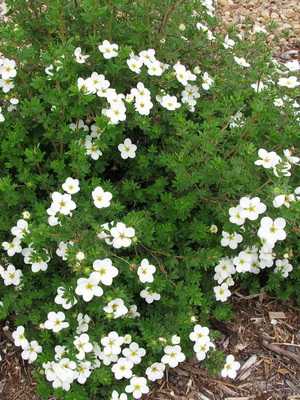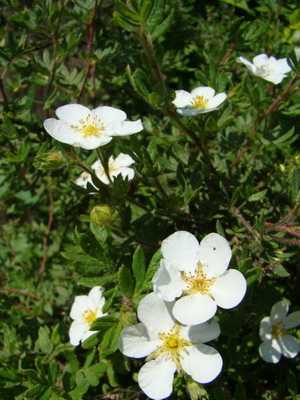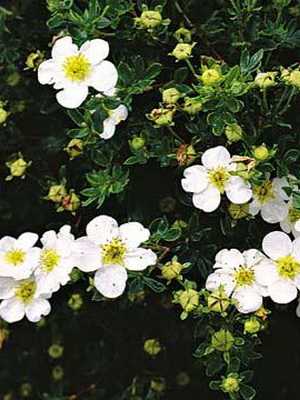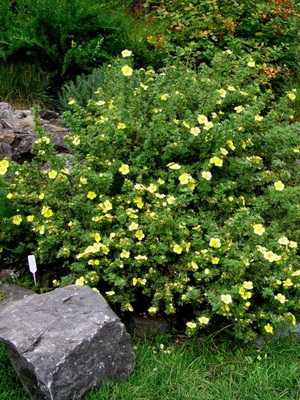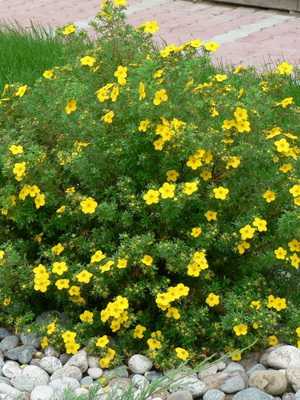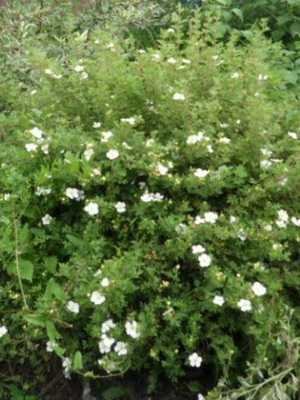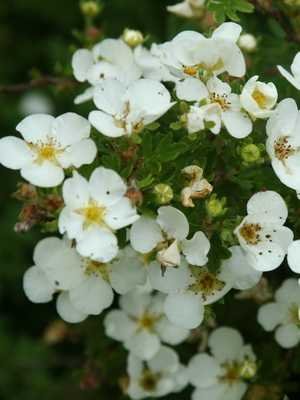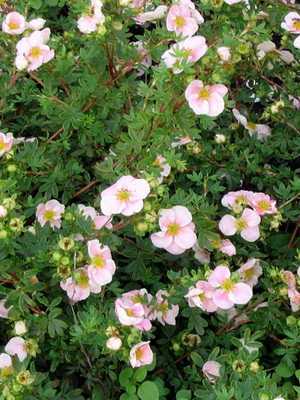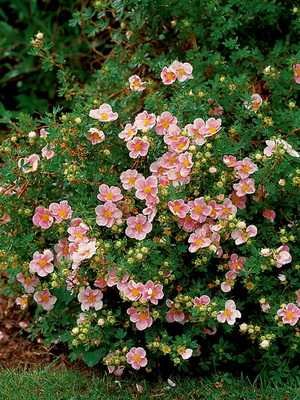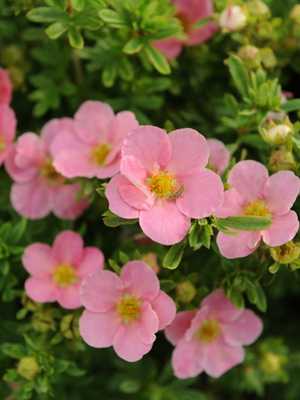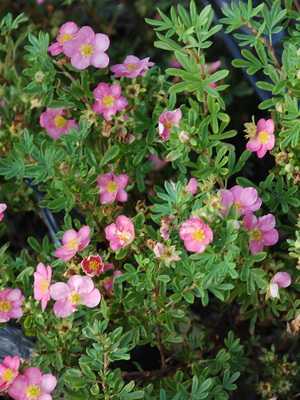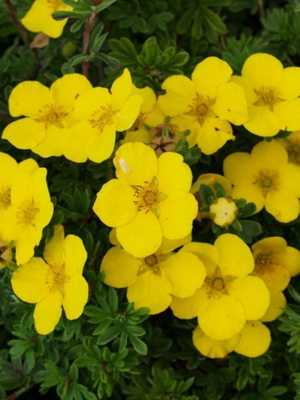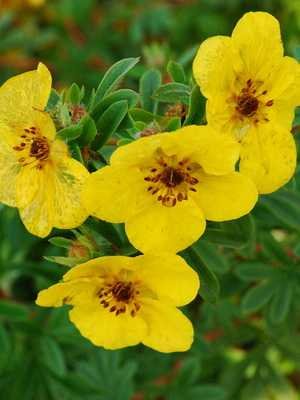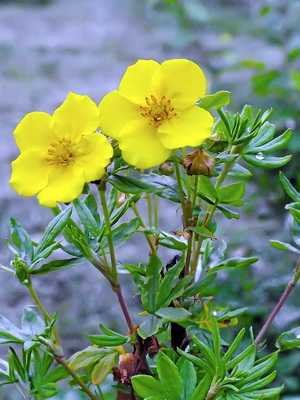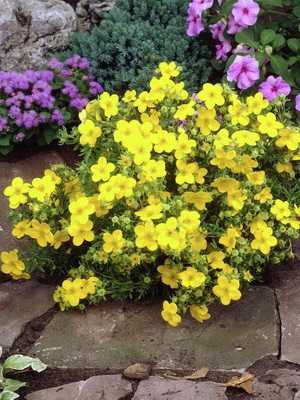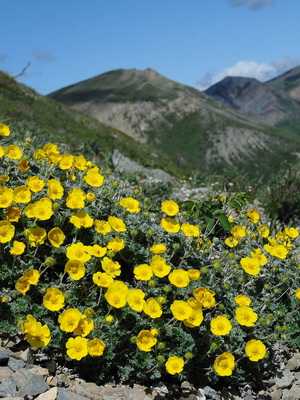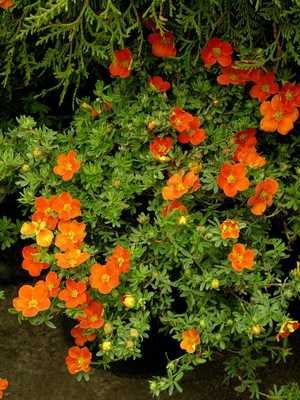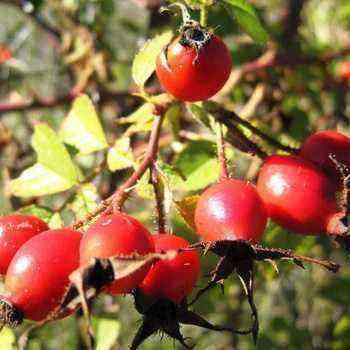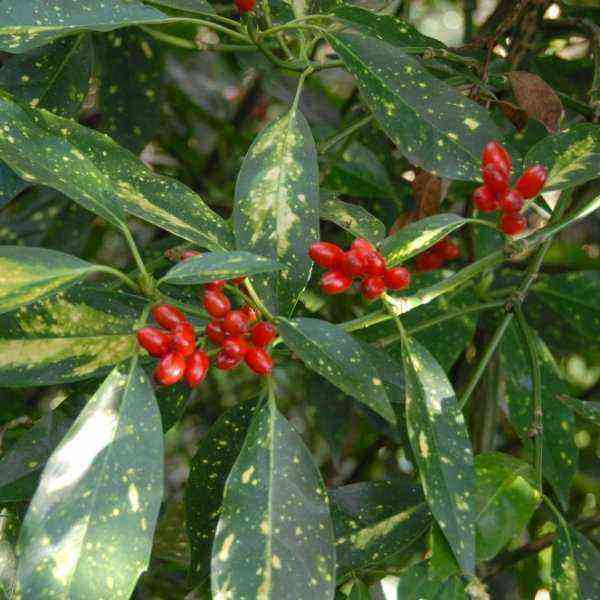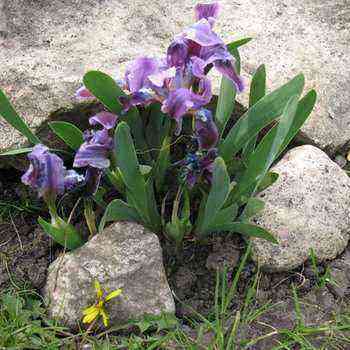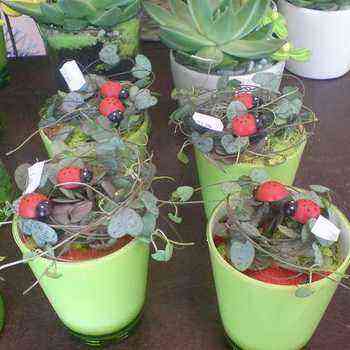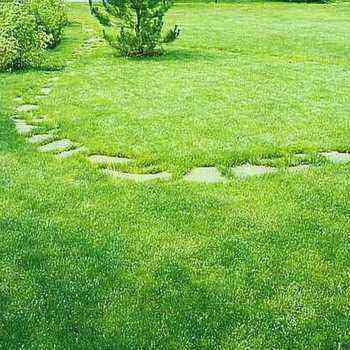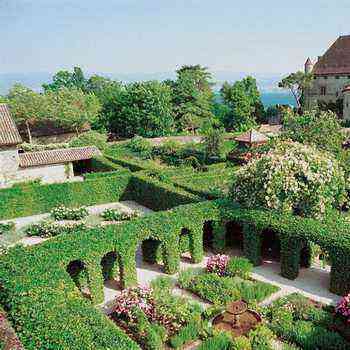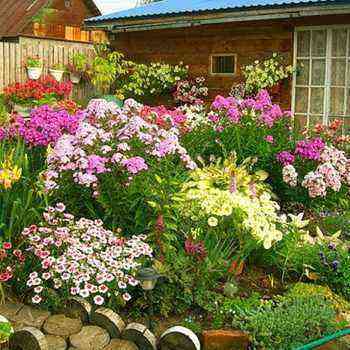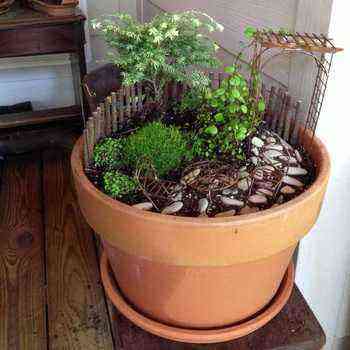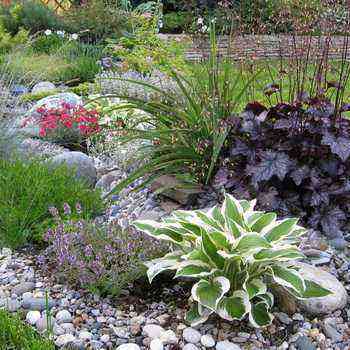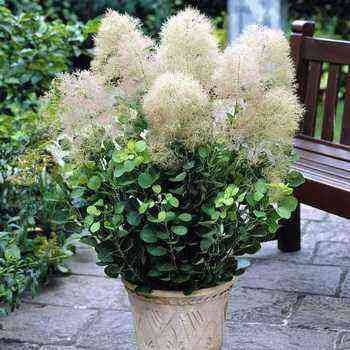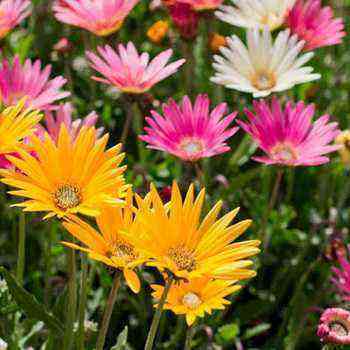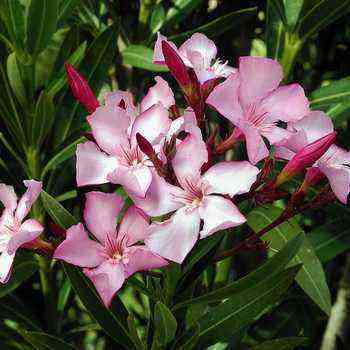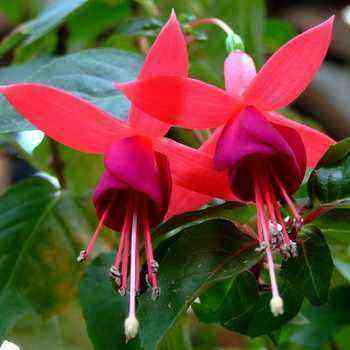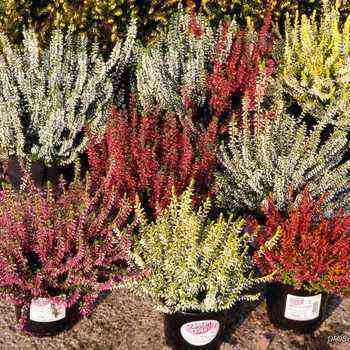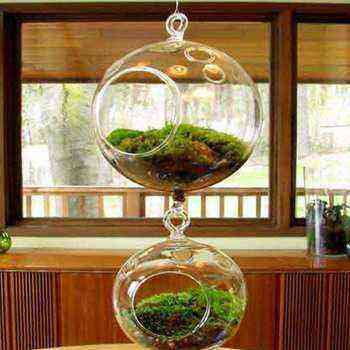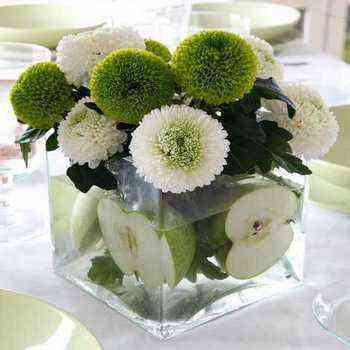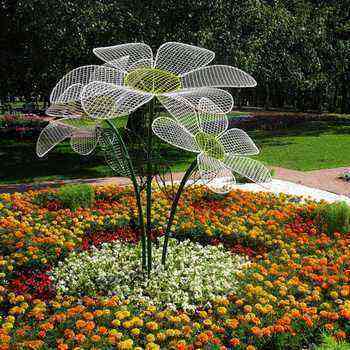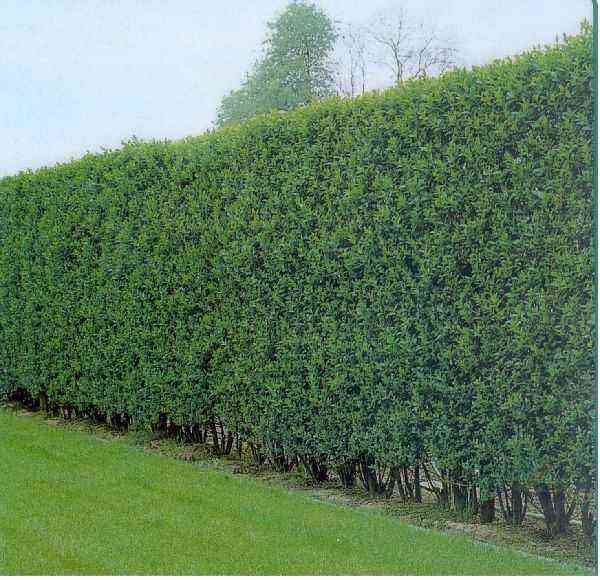
Description of the types and varieties of Kuril tea
Here you can find photos and descriptions of the most common types of Kuril tea.
Kuril tea (Pentaphylloides) is a plant of the Rosaceae family. Another name is five-leafed. The plant is commercially found under the name Potentilla.
Kuril Daurian tea (P. davurica). Shrub up to 0,6 m high. Shoots are glabrous. The crown is loose, up to 1 m in diameter. The bark is gray. The leaves consist of five oblong leaves, shiny above, green, glaucous below.
As you can see in the photo, the Kuril tea plant of this type has white flowers, up to 2,5 cm in diameter, single or in small shields:
It blooms for a very long time, up to 100 days, from May to mid-September, abundantly. Winter-hardy.
Kuril shrub tea (P. fruticosa). Grows on rocky slopes, talus, on rocks. The description of this type of Kuril tea speaks for itself – it is a deciduous shrub, about 1 m tall, with outstretched branches. The crown is spherical, dense, up to 1,5 m in diameter. The flowers are golden yellow, up to 3 cm in diameter, single or collected in small brushes. Blooms from June to August.
Abbotswood (“Abbotswood”). A low shrub up to 1 m in height and a slightly larger crown diameter, up to 1,3 m. It has a dense pillow-like crown. The flowers are pure white, up to 2,5 cm in diameter, single or collected in small brushes. Blooms from June to October. One of the best varieties.
“Pretty Poly” (“Pretty Polly”). Height 0,6 m, crown diameter 120 cm. Shrub with thin broad-spreading shoots, dense crown. This variety of Kuril tea has light pink flowers along the edge, dark pink towards the center, of medium size (diameter 3,5 cm). Blooms from May to September.
“Princess” (“Princess”). The height of the shrub is 0,8 m, the diameter of the crown is 120 cm. The crown is dense, cushion-shaped. The flowers are pink, 3-3,5 cm in diameter. Blooms from May to October.
Goldteppich (“Goldteppich”). Low dense shrub with strong creeping shoots, its height is 0,5-0,7 m, crown diameter is up to 1 m. Flowers are large, golden yellow, about 4 cm in diameter, bright. Blooms from May to October.
Goldfinger (“Goldfinger”). Dense shrub up to 1 m tall. The flowers are dark yellow, up to 5 cm in diameter. Abundantly flowering.
“Darts Golddigger” (Dart’s Golddigger). Height up to 0,5 m, crown diameter up to 1 m. The crown is dense, cushion-shaped. It is decorative primarily due to its abundant and long flowering. Blooms from June to October. The flowers are numerous, golden yellow, up to 5 cm in diameter.
“Elizabeth” (“Elizabeth”). Height up to 0,8 m, crown diameter up to 1,2 m. The crown is dense, cushion-shaped. Blooms from June to October. Flowers are light 2PHOTO yellow, up to 4 cm in diameter.
Red Ace (“Red Ace”). Dense shrub with gentle creeping shoots, 0,5-0,65 cm high, crown diameter 120 cm. The first spring flowers are orange-red, orange-yellow in summer, of medium size (3,5 cm). Blooms from June to September, sometimes until October.
In addition to those listed, varieties are popular among plant lovers:
- Primrose Beauty, Kobold
- Kobold Hopley Orange and Hopley Orange
- Pink Queen, Goldstern.
Growing Kuril tea: planting and care
Landing features. The distance between plants is 60-80 cm. The depth of the planting pit is 50-60 cm. The root system is superficial, but individual roots penetrate to a depth of 80 cm. The root collar is at ground level. For successful care, planting Kuril tea is recommended to be done in open sunny areas. In the shade, it stops blooming. Does not tolerate soil compaction, demanding of soil fertility.
Top dressing. In the spring and at landing, Kemira Universal is brought in from the Calculation of 2 matchboxes. When growing Kuril tea, before flowering, the culture is fed with superphosphate and potassium nitrate, 1 tablespoon per plant.
Pruning. You can cut the shoots once every 3-4 years in the second half of April by 8-10 cm to make the bush compact.
Preparation for winter. In severe winters, the ends of annual shoots freeze slightly. They are cut off. Plants do not lose their decorative effect, since flowers are formed on the shoots of the current year. Adult plants hibernate under the snow without shelter. Varieties with red and orange flowers are less hardy.
